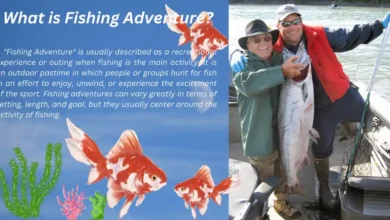
Impacts of Tourism on Mount Everest
Mount Everest:
Mount Everest is one of the most famous places in the world. People travel from all over the globe to reach its summit, which stands at 8,848 meters above sea level. But did you know that tourism on Mount Everest negatively impacts the environment and people who live in the area? Take a look at these negative impacts of tourism on Mount Everest and what you can do to avoid them.
Present Day:
In recent years, the negative impacts of tourism on Mount Everest have become more and more apparent. As more and more people visit the mountain each year, the environment is deteriorating. The amount of trash left behind has increased, as has the number of people who need to be rescued. The Sherpa’s who work on the mountain is also feeling the strain, as they are often overworked and underpaid. With so many climbers trying to get up and down the mountain in a day, accidents happen frequently.
However, despite these negative impacts of tourism on Mount Everest, it is still an attraction for many visitors. Thousands come each year to attempt to climb the world’s tallest peak. There is no way that tourism will stop anytime soon because this mountain continues to attract people from all around the world.
Environmental Impact:
One of the most visible negative impacts of tourism on Mount Everest is the environmental impact. The large number of people trekking to and from the summit each year has a significant impact on the local environment. Trekkers often leave behind trash, which can damage delicate ecosystems. In addition, the use of oxygen tanks and other equipment can release harmful chemicals into the air.
Another negative impact of tourism on Mount Everest is that it causes social problems. It may seem strange that hiking thousands of feet above sea level could cause any social problems, but even tourist attractions have their drawbacks. For example, climbers who are not used to high altitudes can experience acute mountain sickness. Also, some visitors don’t respect local cultures or customs and act in ways that are offensive or inappropriate in religious areas.
Cultural Impacts:
Since the first successful ascent of Mount Everest in 1953, the number of people climbing the mountain has increased exponentially. While this adventure may be a bucket-list item for many, the negative impacts of tourism on Mount Everest are becoming more and more evident.
The local population living at Base Camp and around areas frequented by tourists is an often overlooked issue when discussing the negative impacts. Locals have limited access to resources such as water, food, shelter, and education. These locals are dependent on climbers to bring supplies to them during their expeditions which can take months. However, it’s difficult for outsiders to understand their needs or connect with them due to language barriers and cultural differences.
Ecosystem Losses:
One of the most obvious negative impacts of tourism on Mount Everest is the loss of the ecosystem. As more and more people visit the mountain, they bring with their trash and pollution. This has a devastating effect on the local wildlife, plants, and even the water supply. In addition, construction projects to accommodate tourists can damage or destroy natural habitats. The additional crowds create noise that scares off animals that depend on their sensitive hearing for survival. When you add it all up, there are many negative impacts of tourism on Mount Everest. However, if we can keep the number of visitors at current levels, I believe we could mitigate some of these issues. If every tourist were asked to pack out what they packed in, we would reduce pollution substantially.
Human Health Issues:
Climbing Mount Everest is no easy feat. It requires immense physical strength and stamina, and even then, it’s not guaranteed that you will make it to the top. But as more and more people attempt to summit the world’s tallest mountain, the negative impacts of tourism on Mount Everest are becoming more and more evident.
The negative impacts are many. For example, environmental factors like decreased air quality can cause issues for those with asthma or respiratory problems – both among climbers and Sherpa’s – while at higher altitudes, oxygen levels in general decrease dramatically. There have also been reports of increased instances of frostbite due to reduced temperatures, so much so that some guides refuse to take anyone who has already had frostbite up again.
Safety Concerns:
Tourism has negative impacts on the safety of both tourists and locals in the Mount Everest region. Every year, people die while attempting to climb the mountain, and many more are injured. Some of these injuries and deaths are due to overcrowding, as people attempt to reach the summit during peak times. This overcrowding can also lead to dangerous situations, as people become desperate to reach the top. Avalanches and other natural disasters are also a concern, as they can claim the lives of both climbers and Sherpa’s. The construction of hotels, homes, roads, parking lots, and infrastructure around Mount Everest can be damaging to the fragile environment that makes it such an incredible place for adventure seekers. Negative impacts of tourism on Mount Everest
Concluding Thoughts:
The negative impacts are vast and varied. From the pollution caused by foot traffic and litter to the introduction of new species that disrupt the local ecosystem, it’s clear that something needs to be done to mitigate the damage being done. While some may argue that the benefits of tourism outweigh the negatives, it’s important to consider the long-term effects of our actions. Wise traveller knows how their choices affect the environment in which they travel. So as you make your travel plans this year, take into account the negative impacts of tourism on Mount Everest and make responsible decisions for a better tomorrow. Along with the environmental degradation is an increase in traffic accidents along treacherous mountain roads that pose serious safety risks to drivers and tourists alike.
Human Impacts:
The most visible negative impact of tourism on Mount Everest is the huge amount of trash that is left behind. Every year, tons of garbage is brought up the mountain by climbers and tour groups, and much of it is left behind. This litter not only spoils the natural beauty of the mountain but can also be dangerous for animals that might eat it or get tangled in it.
A less obvious negative impact of tourism on Mount Everest is the loss of campsites used by Nepalese porters to rest and sleep. Before the commercialization of Everest, these campsites were occupied during each climbing season by one expedition team each. Now, however, they are all taken over by many different teams at once. Campsites are often reduced to a single small stone and a pile of rubbish that many people try to squeeze together.
Conclusion:
Mount Everest is one of the most popular tourist destinations in the world. But, as with any popular tourist destination, there are negative impacts. These negative impacts include littering, noise pollution, and traffic congestion. Even something like crowded buses can create negative impacts on tourism on Mount Everest. Because the terrain near Mount Everest is so rough, people have to take specially designed jeeps to get up to base camp. When this happens too many times a day, it creates congestion on the roadways which also has negative impacts on tourism on Mount Everest. Another impact that tourists have is that they often drop litter while hiking because they don’t want to carry their trash around with them. The trash piles up quickly, but Nepal’s government doesn’t have a way to remove all of it. The noise from groups taking photos or having conversations is another type of problem for the native population who live in the area.





Hi I am so thrilled I found your web site, I really found you by mistake, while I was browsing on Digg for something else, Anyways I am here now and would just like to say thanks for a remarkable post and a all round exciting blog (I also love the theme/design), I don’t have time to go through it all at the minute but I have bookmarked it and also added your RSS feeds, so when I have time I will be back to read more, Please do keep up the great work.
Hello there! I’m thrilled that you found your way to my website, even if it was by mistake. Your kind words truly brightened my day. I’m glad you enjoyed the post and the overall design of the blog. Your support means a lot to me.
It’s fantastic to hear that you’ve bookmarked the site and subscribed to the RSS feeds. That way, you won’t miss any future content. I look forward to welcoming you back when you have more time to explore and read further. If there are any specific topics you’d like to see covered in the future, please feel free to let me know. Thank you again for your kind words and encouragement. I’m committed to keeping up the great work, thanks to readers like you!
Wow that was strange. I just wrote an very long comment but after I clicked submit my comment didn’t appear. Grrrr… well I’m not writing all that over again. Anyhow, just wanted to say superb blog!
I apologize for the inconvenience, and I appreciate your kind words! Sometimes technical issues can be frustrating. Thank you for your support, and if you ever have more to share, feel free to do so.